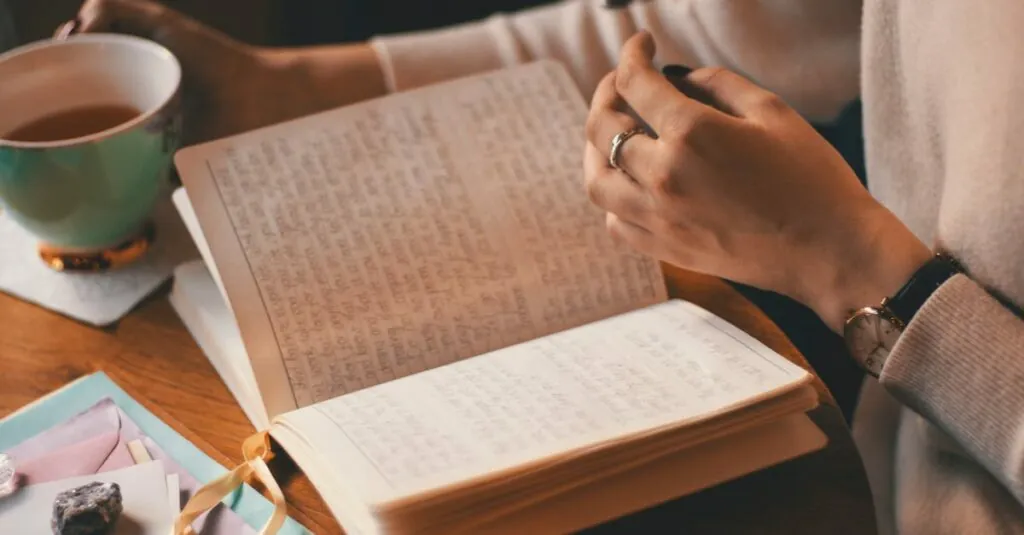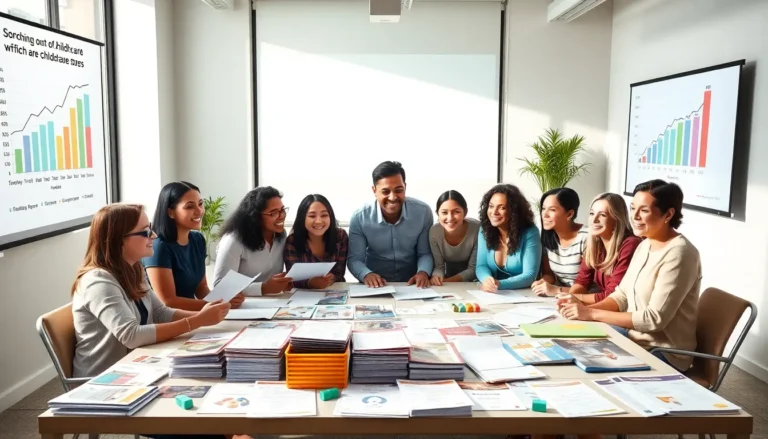In a world where a quick text or emoji often replaces heartfelt gratitude, writing thank you notes might feel like a relic from the past. But let’s face it: nothing says “I appreciate you” quite like a handwritten note that doesn’t fit in a 280-character tweet. Crafting these little gems can be a delightful ritual, transforming a mundane task into a meaningful expression of thanks.
Imagine the joy of your friend or colleague as they unwrap your thoughtful words from an envelope, rather than scrolling through a sea of digital messages. It’s time to dust off those stationery supplies and embrace a routine that not only makes you look good but also warms hearts. So grab your pen and let’s dive into the art of thank you notes—because who wouldn’t want to be the person who brings back the charm of handwritten appreciation?
Table of Contents
ToggleThe Importance Of Thank You Notes
Thank you notes carry significant weight in expressing gratitude. A handwritten note offers a personal touch that digital messages often lack. People appreciate the effort behind crafting a note, making the recipient feel valued. Research shows that gratitude enhances emotional well-being and builds stronger relationships.
Sending thank you notes creates lasting connections, promoting good will and trust. Recipients of notes often feel a sense of warmth and appreciation, enhancing overall morale. Personalizing a note with specific details about the gift or gesture further emphasizes sincerity.
Practicing this routine fosters a habit of acknowledging kindness and generosity. It transforms brief moments of appreciation into meaningful conversations. Recipients may be more inclined to respond positively or reciprocate the kindness received.
In professional contexts, thank you notes can leave a lasting impression. They can differentiate someone from others, showcasing professionalism and thoughtfulness. In addition to boosting relationships, written thank yous contribute to an overall positive interaction dynamic.
Highlighting these aspects not only reinforces appreciation but also strengthens the fabric of communities. Thank you notes symbolize respect and recognition, key elements in every meaningful exchange. Ultimately, embracing this practice ensures that gratitude remains an essential part of human interactions, regardless of modern communication trends.
Establishing A Routine
Establishing a routine for writing thank you notes enhances the practice of expressing appreciation. Consistency in this ritual increases the likelihood of timely messages.
Timing Your Notes
Timing plays a crucial role in writing effective thank you notes. Sending notes within a week of receiving a gift or gesture maintains relevance. Recipient appreciation often grows when notes arrive promptly. Noting special occasions, such as birthdays or holidays, aids in prioritizing when to send notes. Positive impressions stem from timely acknowledgments, making them memorable. Set reminders to ensure timely delivery—this step minimizes oversights and strengthens connections.
Setting Aside Time
Setting aside dedicated time for writing thank you notes fosters commitment. Scheduling a weekly block of time, even if it’s just 15 minutes, simplifies the process. The repetition establishes a habit, making note-writing less daunting. Creating a comfortable space, free from distractions, enhances focus. Gathering supplies, such as stationery and pens, beforehand speeds up the process. Committing to a routine reduces procrastination and keeps gratitude at the forefront of interactions. Consistent practice transforms thank you notes from a chore into a meaningful expression of appreciation.
Components Of A Great Thank You Note
Crafting a great thank you note includes several key components that elevate its impact and sincerity.
Personalized Greeting
Start with a warm, personalized greeting. Use the recipient’s name to create a sense of intimacy and recognition. A simple “Dear [Name]” conveys warmth. For close friends, consider using friendly phrases like “Hi” or “Hey.” Addressing the person correctly sets a positive tone for the note and acknowledges the relationship.
Expressing Gratitude
Clearly express gratitude within the note. Specify what you appreciate, whether it’s a gift, gesture, or support. By detailing how the act benefited you or made you feel, you deepen the sincerity of your message. Phrases like “I truly appreciate your thoughtfulness” resonate well. Relating the specific action to your feelings fosters a stronger connection and enhances the overall message.
Closing Thoughts
Conclude with a warm closing that reinforces your pride in the relationship. A phrase such as “Warmest regards” or “With heartfelt thanks” strengthens the sentiment. Including an invitation for future contact, like “Looking forward to seeing you soon,” invites ongoing communication. Ending on a positive note solidifies the grateful sentiment, leaving a lasting impression of appreciation on the recipient.
Tips For Maintaining Your Routine
Establishing a routine for writing thank you notes promotes consistency and reinforces gratitude. Streamlining supplies contributes to a smoother writing process.
Keeping Supplies Handy
Keep necessary supplies in an easily accessible location. Notebooks, quality pens, and stylish envelopes enhance the writing experience. Stock up on these essentials to avoid disruption when inspiration strikes. Having everything at hand encourages notes to be written promptly, fostering timely expressions of appreciation. Consider organizing a dedicated drawer or small basket specifically for writing materials. Doing so simplifies the task and motivates individuals to write more often.
Tracking Notes Sent
Maintaining a simple tracking system aids in effective communication. Use a straightforward spreadsheet or a designated notebook to record notes sent and received. Noting recipients and dates ensures that no one gets overlooked, promoting accountability. This method helps visualize progress while reinforcing the importance of gratitude. Following up on past notes can deepen relationships and open doors to future interactions. Tracking efforts encourages continued engagement and serves as a reminder of the meaningful connections forged through gratitude.
Conclusion
Embracing the routine of writing thank you notes enriches personal and professional relationships. It transforms simple gestures into heartfelt expressions of gratitude that resonate deeply with recipients. By dedicating just a few minutes each week to this practice, individuals can cultivate a habit that enhances their emotional well-being and strengthens connections.
Tracking notes sent and received ensures no one is overlooked and fosters a sense of accountability. As people rediscover the charm of handwritten appreciation, they’ll find that these notes not only convey thanks but also create lasting bonds built on sincerity and thoughtfulness. Making thank you notes a meaningful ritual can significantly impact interactions in today’s fast-paced digital world.




